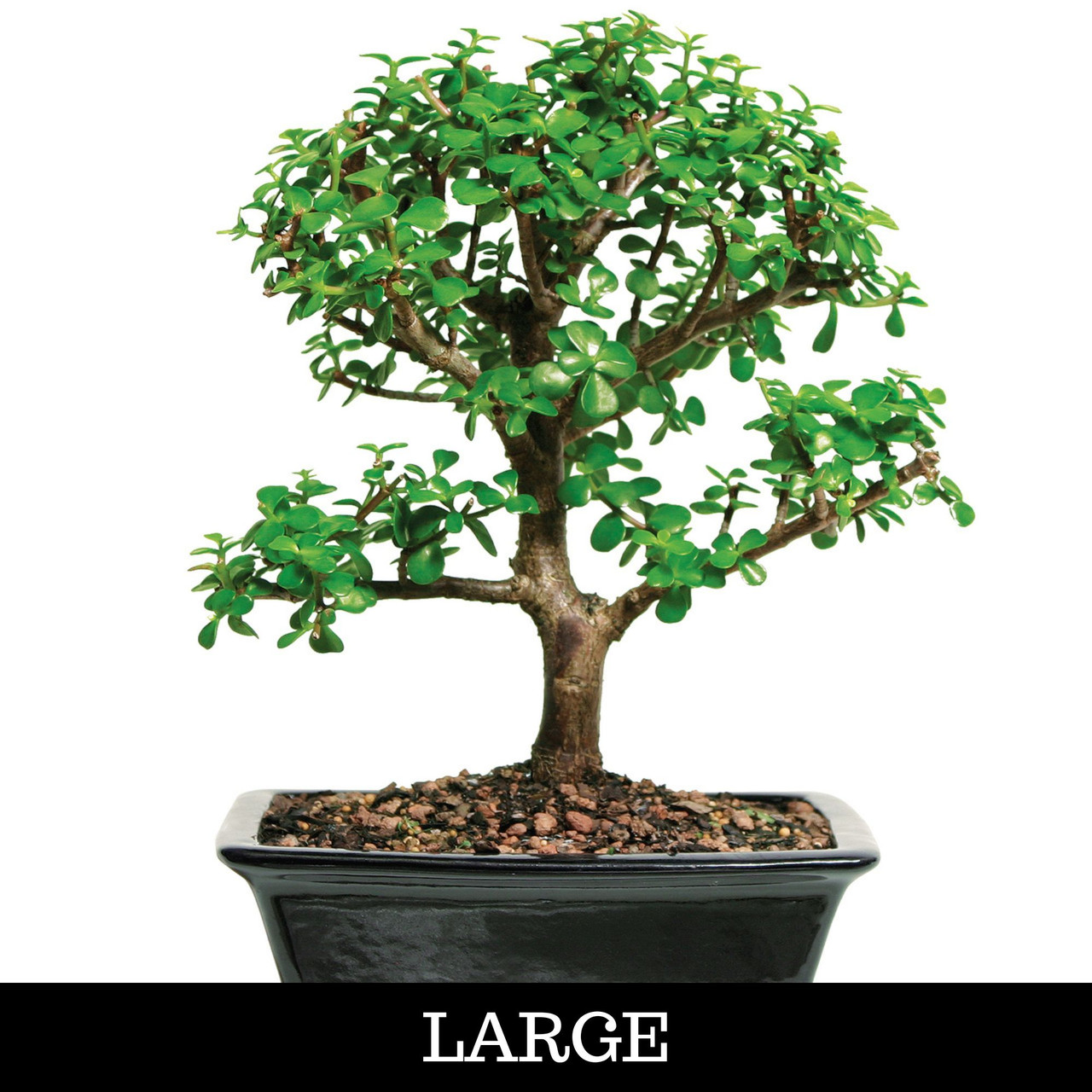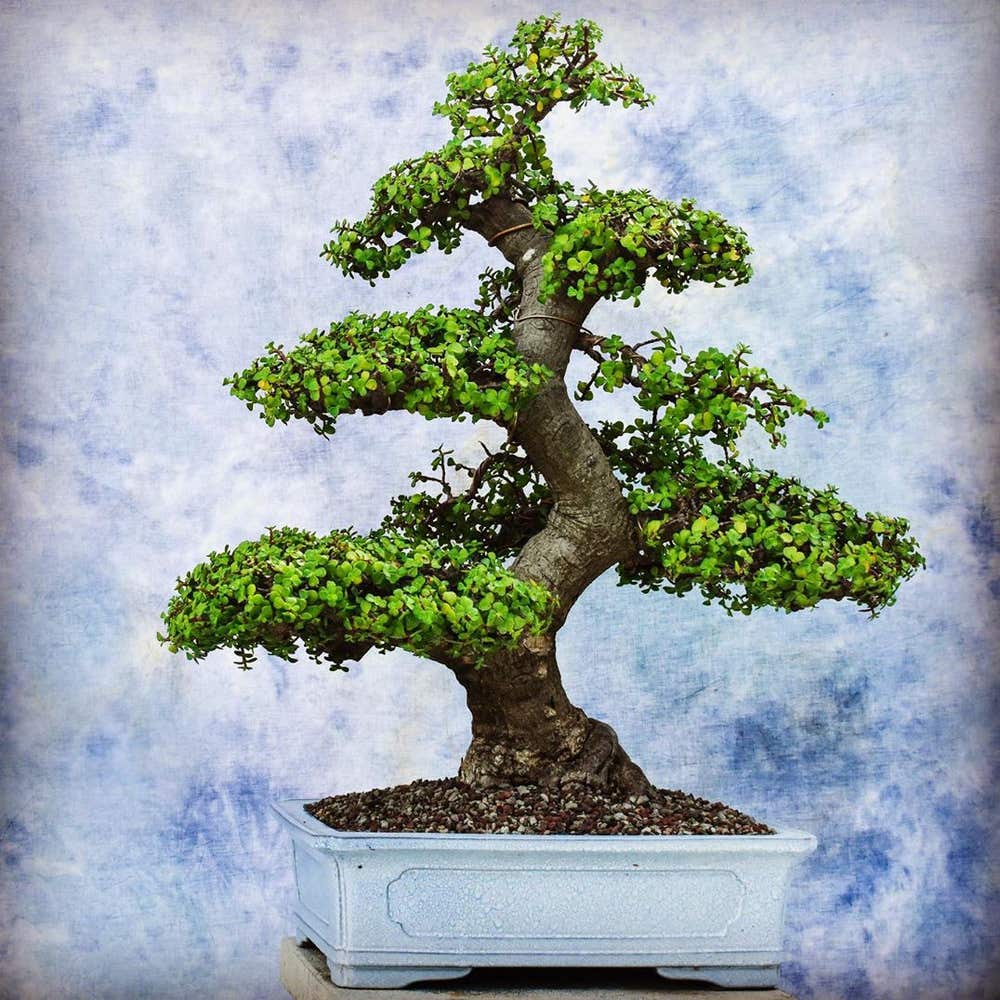Elephant Food, also known as Portulacaria afra, is a popular bonsai tree. Proper care involves regular watering, sunlight, and pruning.
Elephant Food bonsai trees are a beautiful and unique addition to any indoor garden. These succulent plants require minimal care but thrive with the right conditions. Ensure the bonsai receives ample sunlight for at least 4-6 hours daily. Water the plant thoroughly but allow the soil to dry out between waterings.
Pruning is essential to maintain its shape and encourage growth. Use well-draining soil to prevent root rot. Fertilize sparingly during the growing season for optimal health. This low-maintenance bonsai tree is perfect for both beginners and experienced gardeners, adding a touch of nature’s elegance to any space.

Credit: www.bonsaioutlet.com
Ideal Growing Conditions
Elephant Food Bonsai thrives in bright, indirect sunlight and well-draining soil. Regular watering keeps it healthy, but avoid overwatering.
Light Requirements
The Elephant Food Bonsai needs bright light. Place it near a window with indirect sunlight. It can also thrive under grow lights. Ensure the tree gets at least 6 hours of light daily. Too much direct sunlight can harm the leaves.
Optimal Temperature Range
This bonsai prefers warm temperatures. Keep it in a room between 65°F and 80°F. Cold temperatures can damage the tree. Avoid placing it near cold drafts or air conditioning units. Consistent warmth helps the tree grow well.
Soil And Potting
Elephant food bonsai trees need well-draining soil. A mix of 40% organic matter and 60% inorganic matter works best. Organic matter can include compost or peat moss. Inorganic matter can be perlite or pumice. This soil mix helps prevent root rot and overwatering.
Use a pot with drainage holes. The pot should be shallow but wide enough for the roots. A ceramic pot is a good choice. Make sure the pot is heavy enough to hold the bonsai tree upright. Choosing the right pot helps the tree grow healthy and strong.
Watering Guidelines
Ensure your Elephant Food Bonsai Tree thrives by watering it when the top inch of soil feels dry. Maintain consistent moisture without overwatering to prevent root rot.
How Often To Water
Your Elephant Food Bonsai needs water once a week. Check the soil before watering. The soil should be dry up to an inch deep. Use a finger to test the soil. Water deeply until water drains from the bottom. Avoid letting the plant sit in water.
Signs Of Overwatering
Yellow leaves are a sign of overwatering. The plant might look wilted too. Mushy stems can also indicate too much water. Root rot may occur if the problem continues. Always check the soil moisture first. Adjust your watering schedule if needed.
Fertilization Tips
Organic fertilizers are great for Elephant Food Bonsai Trees. They release nutrients slowly. Inorganic fertilizers provide a quick nutrient boost. These can be in liquid or granular form. Balanced fertilizers have equal parts of nitrogen, phosphorus, and potassium. This is ideal for overall health. High-nitrogen fertilizers promote leaf growth. Use these in the growing season.
Fertilize your bonsai tree in spring and summer. Reduce the amount in fall. Do not fertilize in winter. Use a balanced fertilizer every two weeks. In the growing season, switch to high-nitrogen fertilizer. Always water the soil before fertilizing. This prevents root burn.
Pruning And Shaping
Prune your Elephant Food Bonsai tree during the growing season. This is usually in spring and summer. Cut back new growth to maintain the tree’s shape. Always use sharp scissors or pruning shears. Remove any dead or yellow leaves. This helps the tree stay healthy. Avoid heavy pruning in winter.
Use wire to shape branches. Wrap the wire around the branch gently. Bend the branch to the desired position. Remove the wire after a few months. Avoid wiring during the growth season. Trim the branches to keep the tree small. Always cut just above a leaf node. This encourages new growth.

Credit: greg.app
Pest And Disease Management
Aphids, spider mites, and scale insects often attack bonsai trees. These pests suck sap from the leaves. Plants may weaken and leaves might turn yellow. Mites are very tiny and hard to see. Aphids leave a sticky residue on the plant. Scale insects look like small bumps on the branches.
Check your bonsai tree regularly. Remove any pests by hand if possible. Use a gentle soap spray to wash the leaves. Neem oil can help keep pests away. Keep your bonsai in a clean environment. Ensure good air circulation around the tree. This helps prevent mold and fungus. Avoid overwatering the plant. Healthy plants are less likely to get pests.
Seasonal Care
Ensure your Elephant Food Bonsai Tree thrives by providing proper seasonal care. Maintain optimal soil moisture and adjust light exposure based on the season. Prune regularly to promote healthy growth.
Winter Care
Elephant Food Bonsai needs less water in winter. Place the tree in a spot with indirect sunlight. Protect the tree from frost and cold winds. Keep it indoors if temperatures drop below 50°F. Use a humidity tray to maintain moisture. Check soil moisture weekly to prevent dryness.
Summer Care
Water the tree regularly during summer. Ensure the tree gets plenty of sunlight. Avoid direct midday sun to prevent leaf burn. Use a well-draining soil mix. Fertilize the tree every two weeks with a balanced fertilizer. Trim and prune as needed to maintain shape. Keep an eye out for pests.
Propagation Methods
Start by cutting a healthy branch. Make sure it is 4-6 inches long. Remove the leaves from the bottom half. Dip the cut end in rooting hormone. Plant the cutting in well-draining soil. Water it lightly and keep it moist. Place the pot in a warm, bright spot. Roots will start to grow in a few weeks.
Collect seeds from a mature elephant food bonsai. Soak the seeds in warm water for 24 hours. Plant the seeds in a seed-starting mix. Cover them lightly with soil. Keep the soil moist but not soaked. Place the pot in a sunny location. Germination will occur in 2-4 weeks. Transplant seedlings to individual pots once they are strong enough.

Credit: www.pinterest.com
Conclusion
Caring for an Elephant Food Bonsai Tree is rewarding and simple. Keep the soil well-drained and water sparingly. Ensure it gets ample sunlight and occasional pruning. Follow these tips to enjoy a healthy, beautiful bonsai. Your dedication will result in a stunning, miniature tree that adds charm to any space.

